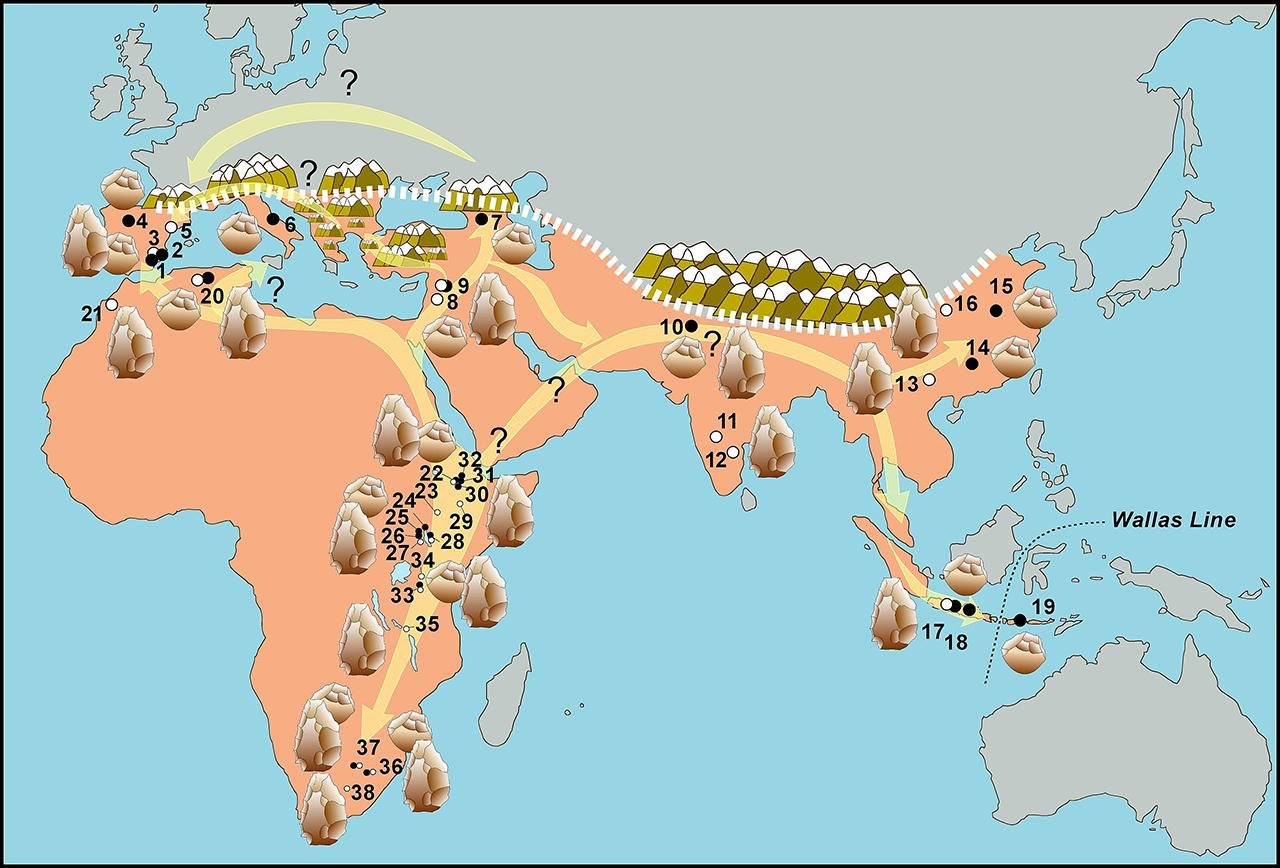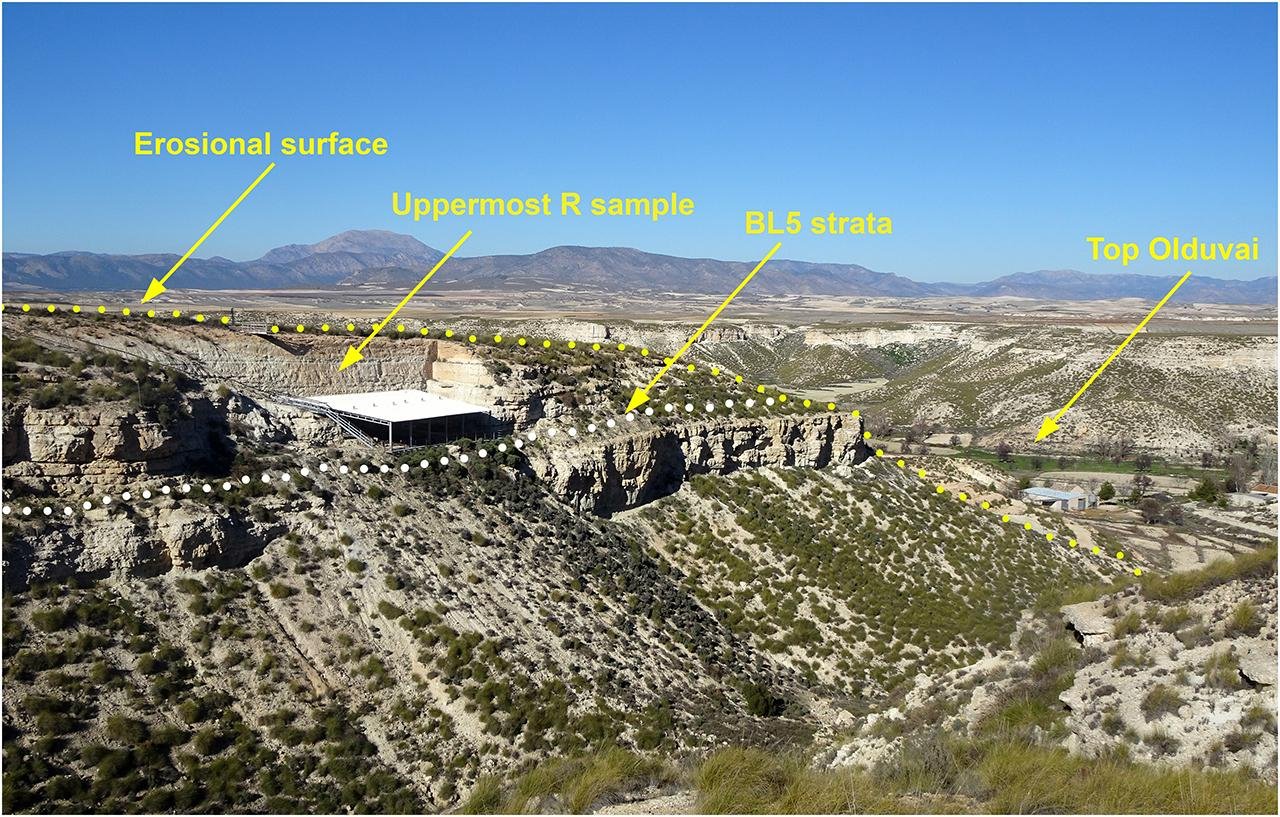Recent geological dating techniques have determined that human remains discovered in the Orce region of southern Spain are the oldest in Europe, dating back approximately 1.3 million years. This discovery supports the hypothesis that early humans arrived in Europe via the Strait of Gibraltar, challenging the previously held belief that they migrated through the Mediterranean via Asia. The study, led by Dr. Lluís Gibert, a researcher and lecturer at the University of Barcelona, involved collaboration with the Berkeley Geochronology Centre and Murray State University.
 Archaic hominins. Credit: Ninara / CC BY 2.0.
Archaic hominins. Credit: Ninara / CC BY 2.0.
The new dating, based on paleomagnetism analysis, was conducted on an area of Orce that had not been sampled before and was protected from erosion. Paleomagnetism studies the inversion of the Earth’s magnetic poles recorded in minerals, providing a method to establish time periods. The long sedimentary sequence in Orce, which exceeds 80 meters, allowed for detailed and extended magnetostratigraphy encompᴀssing five magnetic events. This placed the Orce sites between 1.77 and 1.07 million years ago.
Dr. Gibert explained, “The uniqueness of these sites is that they are stratified and within a very long sedimentary sequence, which allows for the development of long paleomagnetic sequences to identify different magnetic reversals.” Using a Bayesian age-stratigraphic model, the team estimated the age of the Orce sites with a margin of error of only 70,000 years. Venta Micena was dated at 1.32 million years ago (Ma), Barranco León at 1.28 Ma, and Fuente Nueva 3 at 1.23 Ma, surpᴀssing the age of the Sima del Elefante site in Atapuerca, which is between 0.2 and 0.4 Ma more recent.
The researchers also analyzed the fauna found at Orce, comparing it to other Early Pleistocene sites in Europe. Robert Martin conducted a detailed analysis of micromammals and large mammals, revealing that the fauna at Orce was more primitive than that at Atapuerca’s Sima del Elefante site. The absence of Asian pig ancestors at Orce further supported its greater antiquity. Dr. Gibert noted, “The small and large fauna of Orce is more primitive than that of the Sima del Elefante, where the evidence shows that the rodent Allophaiomys lavocati is more evolved than the Allophaiomys recovered from the Orce sites.”
 Key dated sites showing the world distribution of hominins before 1 Ma (orange colour) and potential dispersion routes. Credit: Gibert et al., Earth-Science Reviews (2024)
Key dated sites showing the world distribution of hominins before 1 Ma (orange colour) and potential dispersion routes. Credit: Gibert et al., Earth-Science Reviews (2024)
This new dating aligns with other evidence suggesting early humans entered Europe via the Strait of Gibraltar. Similarities between lithic industries in southern Spain and northern Africa, as well as the presence of African fauna such as Hippopotamus and Theropithecus oswaldi, support this hypothesis. Dr. Gibert stated, “We defend the hypothesis that early humans arrived from Gibraltar because no older evidence has been found at any other site along the alternative route.”
The researchers identified a “diachronism” between the oldest human occupation in Asia, dating back 1.8 Ma, and the oldest occupation in Europe at 1.3 Ma. This indicates that African hominids arrived in southwestern Europe more than 0.5 million years after leaving Africa. Dr. Gibert explained, “These differences in human expansion can be explained by the biogeographical barriers that isolate Europe from Asia and Africa, such as the Bosphorus Strait, Dardanelles, Sea of Marmara, and the Strait of Gibraltar.”
 View of Barranco Leon site showing the location of the upper boundary of the Olduvai in the lower part of the Vélez Valley and the uppermost reverse paleomagnetic sample 5 m below an erosional surface. Credit: Gibert et al., Earth-Science Reviews (2024)
View of Barranco Leon site showing the location of the upper boundary of the Olduvai in the lower part of the Vélez Valley and the uppermost reverse paleomagnetic sample 5 m below an erosional surface. Credit: Gibert et al., Earth-Science Reviews (2024)
Humanity’s arrival in Europe likely required advanced technology to cross maritime barriers, similar to the migration to the island of Flores in Indonesia over a million years ago. Dr. Gibert added, “The Gibraltar route currently requires crossing up to 14 kilometers of sea, but in the past, this distance may have been shorter due to tectonic activity and sea level fluctuations.”
Excavations at Orce began in 1982 by paleoanthropologist Josep Gibert, leading to the discovery of five human remains, including fragments of a humerus and parts of a cranium. These findings generated controversy until independent studies confirmed their human origin. Subsequent discoveries of human molar teeth and Olduvayan lithic tools at nearby sites further solidified evidence of early human presence in Orce.
University of Barcelona
More information: Gibert, L., Scott, G., Deino, A., & Martin, R. (2024). Magnetostratigraphic dating of earliest hominin sites in Europe. Earth-Science Reviews, (104855), 104855. doi:10.1016/j.earscirev.2024.104855





